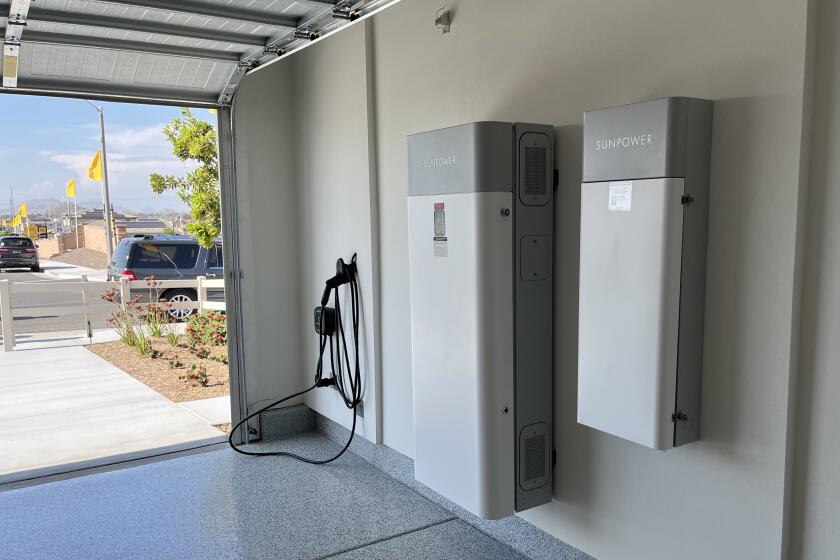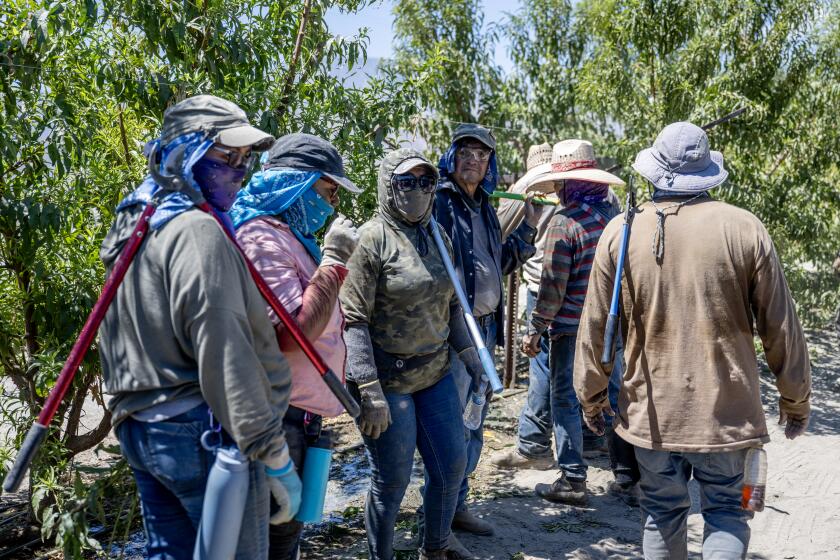
- Share via
BEIRUT — At the beginning of this month, as a thermal dome pushed temperatures in parts of the Middle East past 122 degrees, Iran ordered a two-day shutdown of schools, banks and public institutions, which helped relieve the burden on the nation’s faltering power grid.
Authorities in Iraq did much the same in the country’s sizzling southern regions a few days later, while Jordan, where such shutdowns are rare, decreed work stoppages during peak heat hours.
Last week, Egypt told public employees to work from home one day a week until September. The government has rationed electricity since July, with rolling blackouts that have left many Egyptians sweaty and frustrated.
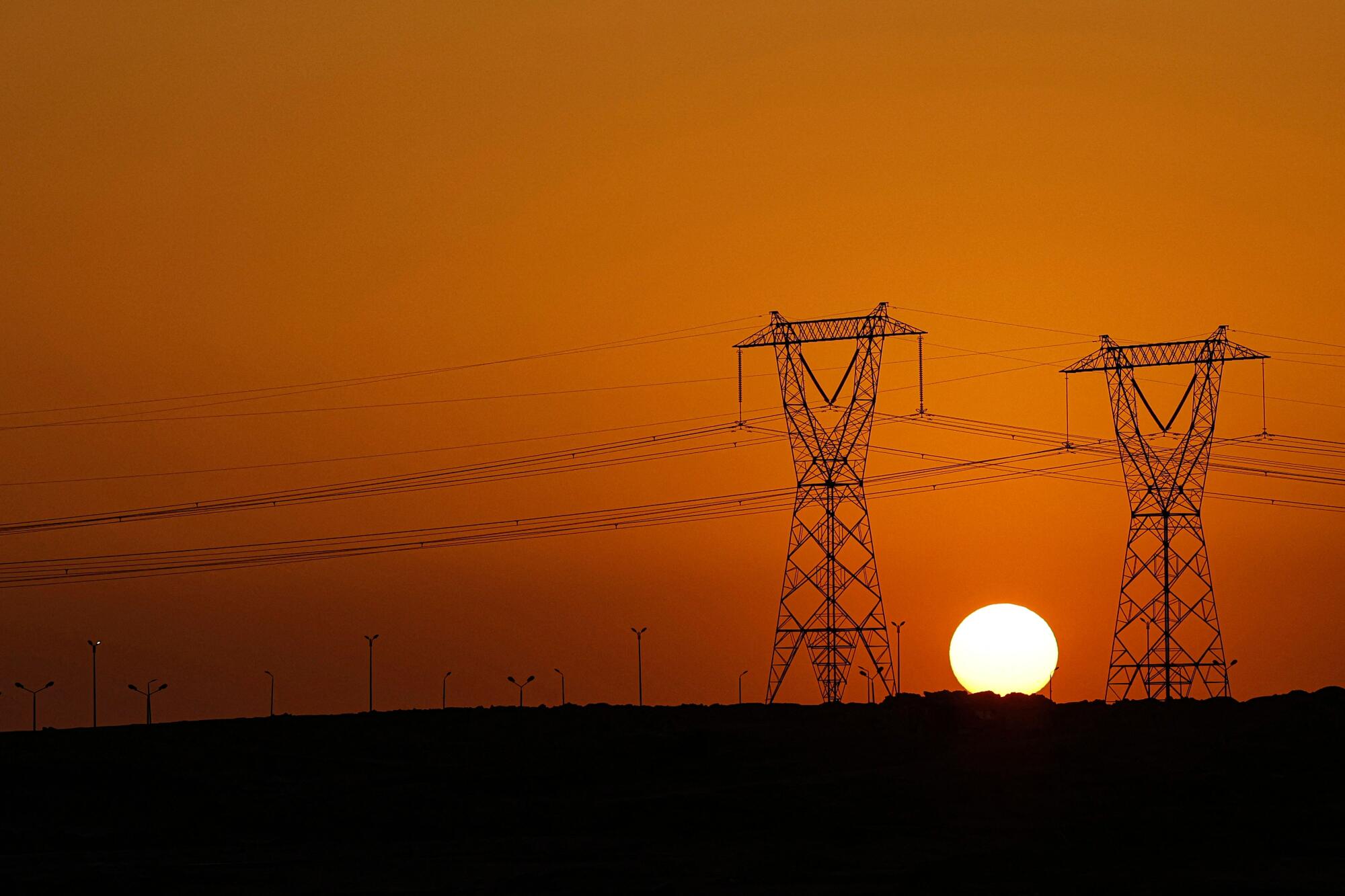
As the world grows hotter and blistering summer days become routine, the task of supplying electricity is becoming an increasingly intractable problem across the Middle East. Soaring demand for cooling — fans, air conditioners, fridges and freezers — is overtaxing electrical grids long beset by war damage, mismanagement or corruption.
And it’s set to get worse. Already, the heat index, which measures the combined effect of temperature and humidity, has reached 152 degrees in some parts of the region, near the limits of human tolerance. Scientists predict that by 2050 much of the Middle East will suffer extreme heat — defined as an average annual temperature of around 84 degrees. A recent study in the journal Lancet Planetary Health looking four decades into the future found that for every 100,000 people in the region, 123 will suffer heat-related deaths each year — more than 60 times the current rate.
“People are hiding inside their homes from the heat,” said Saleh Ubaidi, a Baghdad-based chef who recently shut down his restaurant for the season because people were not venturing outside.
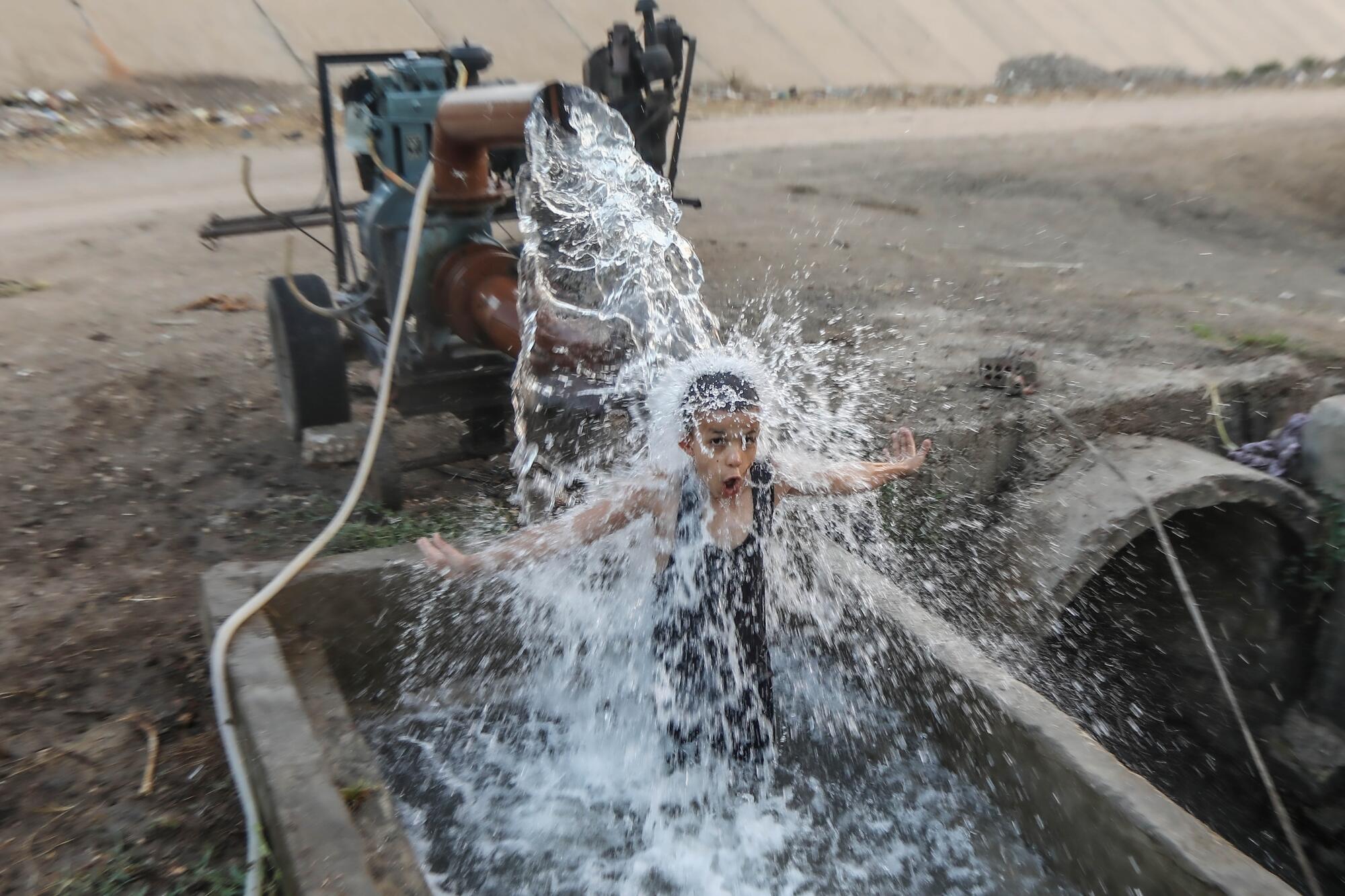
Even nations with the capacity to provide more power balk at the higher costs or have to contend with infrastructure that’s simply not designed to cope with the increased stress of working harder for longer under hotter conditions. But failing to supply electricity carries economic and political risks, especially for nations whose authoritarian regimes have governed according to a simple rule: cheap basic services in exchange for public quiescence. In recent years, Iran, Iraq, Lebanon and Syria have all seen protests ignite over issues of power provision.
“Part of the social contract with the government was services for the people, to silence them,” said Ahmed Tabaqchali, an Iraqi economic expert.
In this summer’s extraordinary heat, many Middle Eastern countries have instead resorted to mandatory work furloughs or power cuts, cannibalizing parts of their economies to save power — and money.
Marked by record-setting heat waves, major wildfires, and melting sea ice, July saw global average temperatures soar 2.02 degrees above average.
Egypt is a prime example, critics say.
On paper, the Arab world’s most populous nation should have no problem meeting amped-up demand. Not only is it a gas exporter, but it achieved electrical self-sufficiency a few years ago after investing about $11.5 billion and building more than 30 power stations, including a flagship project by German giant Siemens. The country’s 6,000-megawatt deficit turned into a 13,000-megawatt surplus.
Nevertheless, after a series of blackouts when the temperatures in Cairo flirted with the 99-degree mark in July, the government introduced hourlong power cuts.
Many complain that the rationing is unequal. In recent weeks, Egyptians living in rural and poorer areas have posted on social media about outages frequently lasting longer than an hour or occurring multiple times a day on erratic schedules. Workdays have been disrupted. Elevator rides have become a game of chance, with losers sometimes posting videos of their predicaments.
With another heat wave straining California’s electrical grid, it’s a good time to think about how to keep the power on during a blackout. There’s no cheap fix.
“It’s an issue that’s not only affecting the poor — they get more power cuts — but it’s also affecting the class that’s vocal on social media and who were once supporters of the regime,” said one Cairo activist and blogger who uses the pen name Big Pharaoh. Fearing harassment from authorities, he declined to give his name.
“They pay every month a hefty amount of money in electricity bills. Now they’re complaining.”
Meanwhile, Egypt’s Mediterranean and Red Sea coasts, where tourists and rich Egyptians spend the hard currency that the cash-strapped state prizes, enjoy uninterrupted power. And there’s widespread suspicion that the government, facing weak production in its gas fields, is limiting domestic gas use in order to export surplus supply.
“In many countries there’s been injustice in the power provision, and the governments would prefer any kind of economic benefit rather than reliable service to their own constituents,” said Jessica Obeid, a founding partner of New Energy Consult, which focuses on energy-related matters in the Middle East, Europe and Africa.
Record heat. Raging fires. What are the solutions?
Get Boiling Point, our newsletter about climate change, the environment and building a more sustainable California.
You may occasionally receive promotional content from the Los Angeles Times.
“It’s a reflection of the government’s desperation in protecting what hard currency it has left,” added Timothy Kaldas, deputy director of the Tahrir Institute for Middle East Policy in Washington.
But a strategy of shutdowns and public holidays comes with knock-on economic effects that risk negating any benefit.
“The very, very crude sort of assessment of the impact is that ... a holiday means people don’t work, and you lose 1/365th of your annual gross domestic product,” said Ziad Daoud, chief emerging markets economist for Bloomberg Economics.
Even for those sectors that continue operating, Daoud added, “productivity is already lower in hot climates, and if you remove the air conditioning, productivity will be massively hit. That’s the broad picture.”
Scientists say crushing temperatures that blanketed Europe last summer may have led to more than 61,000 extreme-heat-related deaths.
Another danger is political and social unrest, as people become frustrated with their governments’ inability to provide power.
Iran, which possesses the world’s second-largest gas reserves, is also the eighth-biggest emitter of greenhouse gases — China and the U.S. occupy the top spots — in part because of its generous fuel subsidy and its reliance on energy-hungry industries such as steel, iron, cement and cryptocurrency mining.
With electricity consumption peaking at a record 72,500 megawatts each day, according to state media, the government called on people last month to curb usage. It framed the nationwide shutdowns as a request from the country’s Health Ministry because of “unprecedented heat.”
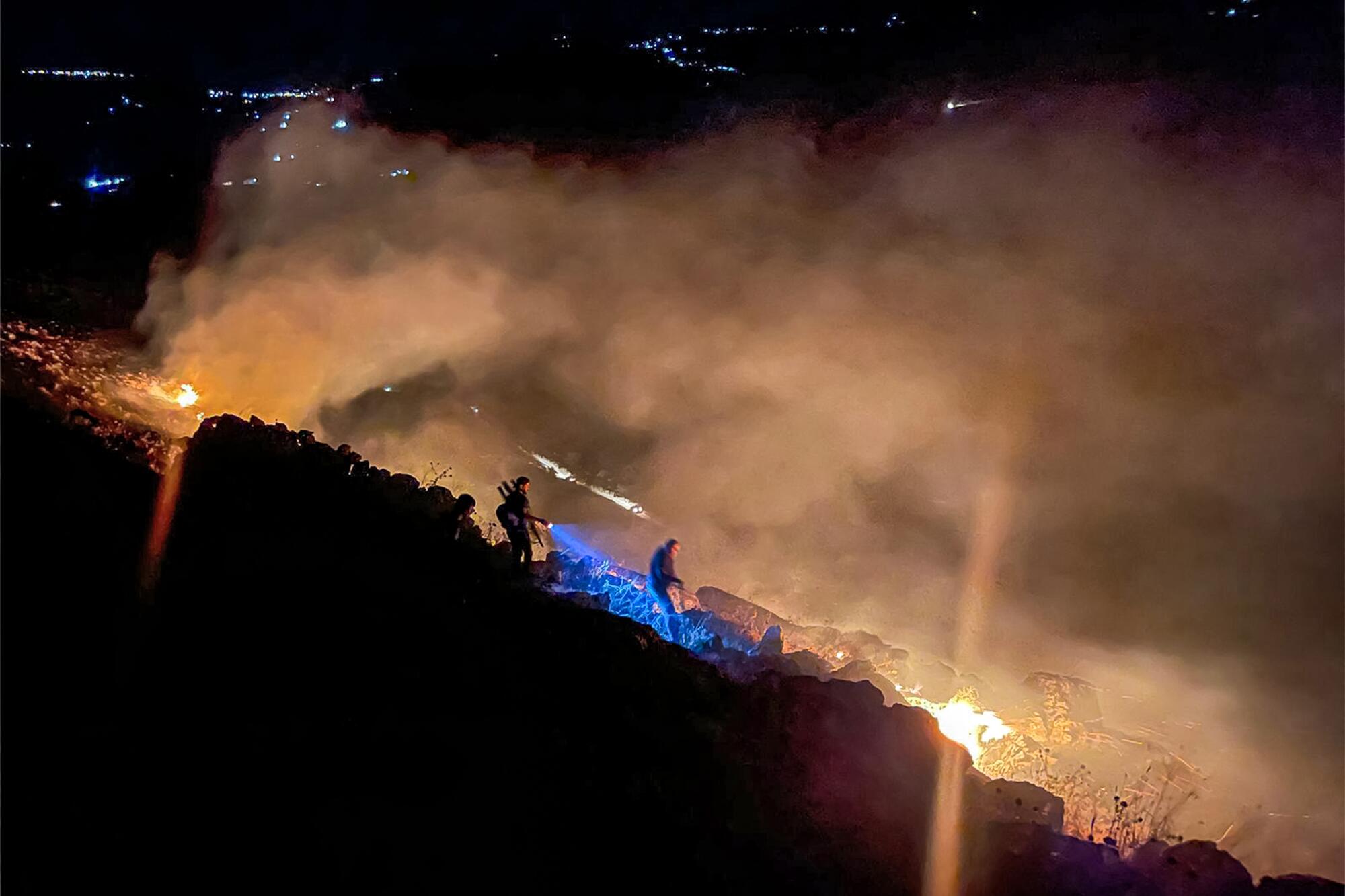
But for many Iranians, that justification rings false and seems more of an excuse from a government wary of a resurgence of the protests that gripped the country for months after the death last year of a young woman in the custody of Tehran’s morality police.
Many Iranians pointed out that temperatures, though searing, were no worse than last year and that parts of the country relatively unaffected by the heat wave shouldn’t need to shut down. The real reason, they said, is that the country’s energy network, which has fallen into disrepair after years of international sanctions, can no longer cope with demand — another problem caused by an obstinate leadership more interested in applying religious dogma than making the diplomatic outreach that could bring relief.
In many Middle Eastern nations, said Tabaqchali, the Iraqi economic expert, the failure to provide sufficient power is rooted in a problem older than climate change: traditionally low electricity prices and the state’s inability to collect payments.
As climate change pushes temperatures to increasing extremes, farmworkers in the Coachella Valley are being exposed to dangerous heat at work and at home.
Jordan maintains 24-hour electricity but charges some of the highest prices in the region. With this summer’s record heat and increased demand, the government has had to come up with ways, such as variable pricing based on time of day, to ensure that the expense does not become overwhelming.
In Lebanon, power outages have been a fact of life for decades, forcing people to rely on private providers such as Ali, a 25-year-old who keeps watch over four rows of beige-colored breakers, a mosaic of switches and a spaghetti bowl of wires and cables that form the nervous system of a mini-electric grid. The setup delivers power from a pair of generators to about 1,200 people across 11 neighborhoods in Beirut’s eastern districts.
But this summer has turned out to be a bigger challenge than usual. June and July reached new heights of hot, and August has been just as bad. Ali, who asked that his last name not be used for reasons of privacy, has already activated both of his hulking diesel generators, but he fears a catastrophic breakdown because of the debilitating heat.
“You see them melting,” he said of the mini-grid’s cables. “We had a fire with one air conditioning unit, and the cables — they’re in the sun all day so they’re already hot — ignited. We had to change more than 1,100 feet of wiring.”
No major U.S. city is more dependent on air conditioning than Phoenix. It’s less a matter of comfort than survival.
Lebanon’s problems go beyond power generation, said Obeid of New Energy Consult. The grid, through a combination of technical and nontechnical issues, loses almost half the load in delivery.
“It’s 14% to18% loss due to technical issues, meaning wires, aging substations. The rest is stolen,” she said.
Similar problems bedevil Iraq, where — despite its gargantuan oil wealth — consistent state-provided electricity remains an unattainable goal more than 20 years after the U.S.-led invasion of the country. Last month, a fire broke out at a major power station in the southern city of Basra, leaving the area in a “total shutdown,” according to a statement from the Ministry of Electricity — an example of the country’s dilapidated infrastructure unable to bear the peak load of 32,000 megawatts each day during the heat.
Summers are traditionally a stress test for any Iraqi government; lack of power is a frequent catalyst for protests. Though the country’s southern regions are the richest in oil, they have some of the worst service, said Naseer Baqer, a climate activist in Dhi Qar province.
News Alerts
Get breaking news, investigations, analysis and more signature journalism from the Los Angeles Times in your inbox.
You may occasionally receive promotional content from the Los Angeles Times.
“The equation is simple: The hotter it is, the fewer hours of state power we get,” he said. With Dhi Qar breaching the 120-degree mark, residents were getting eight to 10 hours of electricity a day.
“And it’s all intermittent. You can’t turn on the air conditioner without state power, and you don’t know when you’ll get it and how long it stays,” Baqer said.
Ubaidi, the Baghdad chef who recently closed his restaurant, depends on generators for cooling, since government-supplied electricity is too unreliable.
“The generator is a partner in your business,” he said. “You work and give it a cut, whether you rent the place or own it.”
More to Read
Sign up for Essential California
The most important California stories and recommendations in your inbox every morning.
You may occasionally receive promotional content from the Los Angeles Times.

